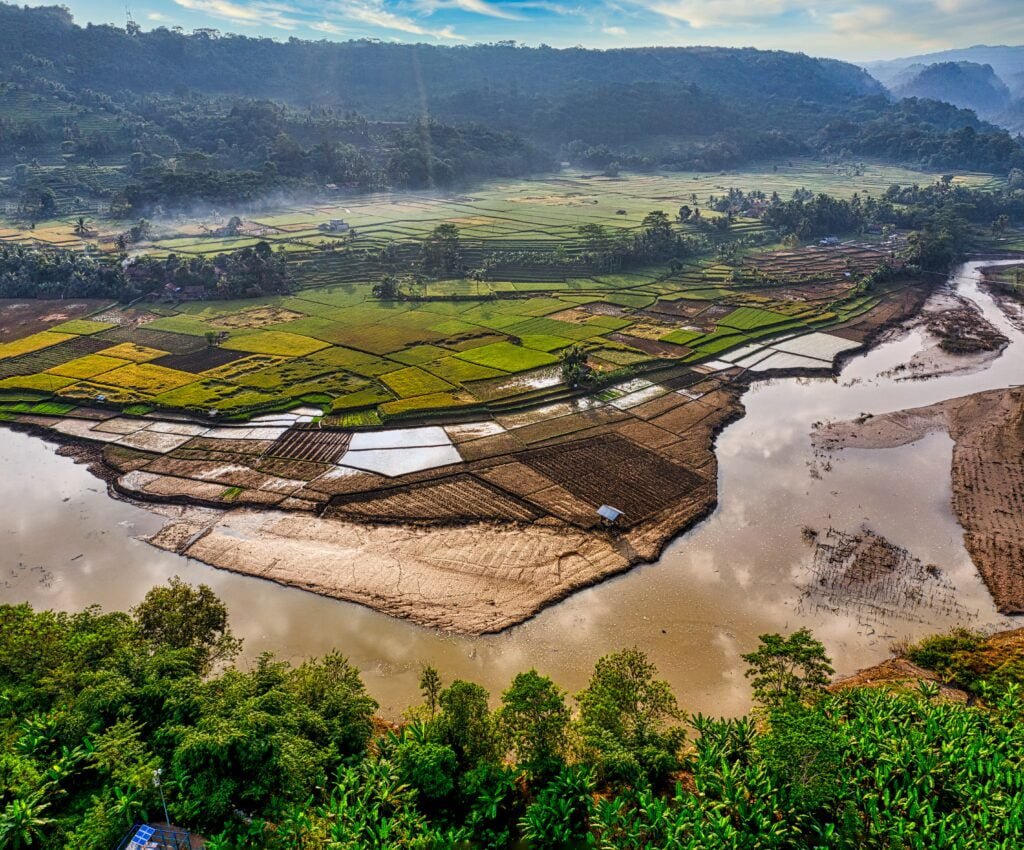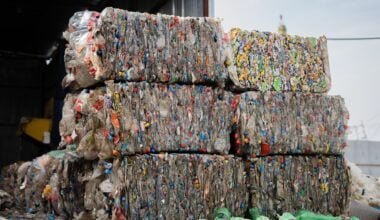Agriculture, a fundamental pillar of human civilization, has nourished societies and propelled development throughout history. However, the burgeoning global populace and escalating agricultural demands have unveiled an ecological quandary: the intricate relationship between farming practices and water pollution. This article investigates the pervasive footprint of agriculture on water purity.
Despite its crucial role in sustaining life, agricultural procedures often disturb aquatic ecosystems. The discharge of fertilizers, pesticides, and animal waste can contaminate water bodies, endangering both the environment and public health. This piece embarks on a journey to comprehend the various dimensions through which agriculture intersects with water pollution, ultimately striving to unearth viable strategies that reconcile the pressing needs of food production with the preservation of uncontaminated water resources.

Agricultural Runoff: A Primary Culprit
Agricultural runoff is a major cause of water pollution because it introduces contaminants like pesticides, fertilizers, and pollutants into nearby bodies of water. This occurrence happens when irrigation or rains carry these materials—which are often rich in nutrients like nitrogen and phosphorus—into rivers, lakes, and seas. Once these nutrients are present in water bodies, they cause eutrophication, an excessive growth of algae that disturbs aquatic ecosystems by reducing oxygen levels and damaging aquatic life.
While increasing output, modern farming has unintentionally exacerbated runoff problems. In order to reduce the usage of chemicals, solutions include constructing buffer zones of plants to filter runoff. Regulatory frameworks are essential for regulating runoff. Understanding how agricultural runoff contributes to water pollution highlights the need of sustainable farming methods for ensuring a healthy cohabitation between agriculture and aquatic environments.
Pesticides and Their Traces in Water
Pesticides, which are essential for protecting crops, unintentionally affect water quality because their remains end up in aquatic habitats. Through processes like runoff and leaching, these chemicals, used to control pests and increase harvests, may enter rivers and groundwater. They cause ecological hazards if they enter aquatic bodies. Pesticides have the potential to disrupt food chains, injure non-target creatures, accumulate in aquatic life, and eventually influence human consumers.
Pesticides that remain in water systems may have long-lasting effects, such as decreased biodiversity and weakened ecosystem health. The potential effects of these substances on aquatic ecosystems and human health have prompted worries even at modest exposure levels. Therefore, tackling the problem entails using targeted application methods, embracing alternatives like biological controls, and putting in place buffer zones to reduce runoff. Recognizing the complex link between pesticide usage and water contamination is essential in order to pursue agricultural strategies that balance production with environmental protection.
Livestock Farming’s Toll on Water Quality
Livestock production is a key food supplier but has complicated waste management issues that affect water quality. Concentrated animal excrement provides a substantial risk of water pollution, particularly in large-scale CAFOs. Runoff and rains may carry nutrients, germs, and antibiotics from these waste products into nearby waterways.
Several problems result from livestock pollution. An oversupply of nutrients in water may induce eutrophication and algal blooms in aquatic ecosystems. Waterborne diseases from garbage pathogens might harm aquatic life and humans. Water systems may benefit from medication residues that promote antibiotic-resistant microbes.
Effective waste management, including fertilizer application, storage, treatment, and handling, is needed to limit livestock production’s impact on water quality. Integrating agriculture with rotational grazing may reduce trash accumulation.
Eutrophication: Fertilizers’ Silent Impact
A subtle but strong environmental concern from excessive fertilizer usage is eutrophication, an often neglected result of intensive agriculture. Crop production is increased by fertilizers’ high nitrogen and phosphorus content. These chemicals disturb aquatic habitats when they overflow into waterways. An excess of nutrients accelerates algal and aquatic plant development. During decomposition, these organisms suck oxygen, generating “dead zones.” Oxygen deficit kills fish and reduces biodiversity. The breakdown of surplus organic matter produces poisons, causing ecological imbalances.
Eutrophication has far-reaching effects. Drinking water pollution, recreational value loss and fisheries and tourist economic impacts are some of the effects. Precision agriculture, fertilizer application, and buffer zones to catch nutrient-laden runoff are needed to manage eutrophication. Recognizing eutrophication as a hidden consequence of fertilizers may help agriculture effectively balance food production and aquatic ecosystem health.
Groundwater Contamination: Leaching Chemicals
The leaching of agricultural pesticides causes groundwater pollution, a hidden consequence. Fertilizers, insecticides, and herbicides may flow into groundwater from farms. Leaching introduces toxins into subsurface water reservoirs.
Concerns exist about groundwater pollution. These pollutants may contaminate drinking water for years. Contaminated groundwater enters rivers and streams, harming aquatic creatures and upsetting biological balances. Contamination may affect soil fertility and crop quality, threatening agricultural viability.
Groundwater pollution prevention requires a comprehensive strategy. Slow-release fertilizers and tailored pesticides allow farmers to apply them precisely. Strategic crop rotation and cover cropping decrease chemical inputs. Vegetative buffer strips around water sources may catch toxins and reduce groundwater contamination. Leaching affects groundwater quality, therefore farmers adopt more responsible agricultural techniques to preserve this vital resource for future generations.
Regulatory Measures and Their Limitations
Yes, here are some examples of regulatory actions relating to agricultural practices and water pollution, along with their restrictions:
Regulatory Actions
Water Quality Standards
- To guarantee secure and long-lasting water supplies, governments set legal limitations for certain contaminants in water bodies.
Systems of Permits
- Large-scale agricultural activities may be required to get permits that set rules for waste management procedures and pollution discharges.
Best Management Practices (BMPs)
- Regulatory bodies support BMPs, which are standards for actions that protect the environment, such as managing runoff and garbage.
Limitations
Regulation monitoring and enforcement on a broad scale may be resource-intensive, which results in sporadic compliance.
Lack of Integration
- Regulations often concentrate on particular contaminants or industries, omitting the overall effect of several sources on water quality.
Farm Size Disparities
- Large industrial farms may have greater resources to comply with rules, but small family farms may find it difficult to do so.
Adaptability Issues
- Regulations may be unable to keep up with the agriculture industry’s fast growth and the emergence of new toxins due to issues with adaptability.
Political and Economic Pressures
- Stricter regulations may be thwarted by vehement agricultural lobbies and commercial interests.
Regional Variability
- Due to variations in temperature, soil types, and agricultural techniques, what thrives in one place may not be good for another.
Act of Balancing
It is essential to strike a balance between practical implementation and efficient regulation. While rules may provide a foundation for pollution mitigation, they must be flexible, take into account various agricultural techniques, and be backed by incentives and education. By addressing the shortcomings of the existing regulatory procedures, more thorough approaches that significantly lessen agriculture’s contribution to water pollution may be developed.
Sustainable Farming: A Promising Approach
Sustainable farming offers a promising avenue to mitigate the detrimental impacts of agricultural practices on water quality and foster a harmonious relationship between food production and environmental preservation. This approach centers on cultivating crops and raising livestock while minimizing the negative effects on ecosystems, water resources, and public health.
Principles of Sustainable Farming:
Soil Health
- This technique emphasizes soil health via minimal tillage, cover crops, and organic matter. These methods increase water retention, reduce erosion, and strengthen sustainable agriculture.
Precision Agriculture
- Advanced technology fine-tunes fertilizer and pesticide applications. This technique reduces use, runoff, and chemical inputs’ environmental effects by targeting particular locations with exact quantities.
Crop Rotation and Diversity
- Strategic crop rotation and plant species integration interrupt pest cycles and decrease pesticide use. This improves soil fertility, long-term production, and ecological equilibrium.
Agroforestry and Buffer Zones
- Planting trees and plants on farms has two benefits. It filters runoff before it reaches waterways by creating natural buffer zones. It also boosts biodiversity and environmental services.
Integrated Pest Management (IPM)
- IPM is a holistic pest control technique that utilizes biological treatments, natural predators, and diligent monitoring. This strategy reduces pesticide usage and improves ecosystems and water pollution.
Efficient Water Management
- Drip irrigation conserves water. This strategy conserves water and reduces chemical runoff into rivers.
Benefits and Challenges
Sustainable farming improves soil, water, and the environment. However, early relocation costs, increased labor costs, and localizing processes are challenges.
The Way Forward
As water contamination grows increasingly urgent, sustainable agricultural techniques become more important. Governments, farmers, and consumers must work together to encourage sustainable practices. Agriculture can fulfill the needs of a growing population and preserve our water resources for future generations by adopting these techniques.
Modern Technology to Reduce Footprint
Modern technologies may help farmers reduce their influence on water quality and practice sustainable agriculture. Precision agriculture revolutionizes crop management via remote sensing, GPS, and data analytics. Farmers can accurately administer fertilizers, insecticides, and water by mapping soil variability and crop health. This increases resource efficiency and reduces runoff and water pollution. Irrigation technology has also changed. Smart irrigation systems use soil moisture sensors, meteorological data, and automation to water plants when and where they need it. Drip irrigation decreases water waste and chemical leaching.
Additionally, drones and satellite photography provide real-time crop health information and early pest and disease identification. Chemical treatment is reduced, reducing their access to aquatic systems. However, high implementation costs, insufficient advanced training, and the digital divide among farmers hinder the adoption of these technologies. Governments, technology providers, and farmers must work together to solve these problems. Integrating contemporary technologies into agriculture may protect water quality. These advances may help crops and water resources coexist more sustainably.
Shifting Perspectives: Consumer Awareness
Consumer education is essential for tackling the complex problem of agricultural practices’ impact on water quality. There is a rare chance to affect agricultural methods and water quality as civilizations grow more aware of the environmental effects of their decisions.
Knowledgeable Consumption
- Consumers who are well-informed and make thoughtful decisions about the food they eat may help bring about change. Supporting farmers who use environmentally responsible and sustainable farming methods may stimulate the market for goods grown with little use of water. As a result, methods that put quality rather than quantity of water first are encouraged to be adopted.
Certification and Labeling
- Consumers may be led to make sustainable decisions via clear labeling and certification schemes that showcase goods from ecologically responsible farming. Recognizable labels that point to products that are organic, sustainably produced, or locally sourced provide customers with the ability to support agricultural practices that are consistent with their beliefs.
Influence and Advocacy
- Retailers, wholesalers, and even governments may implement rules that support sustainable agriculture in response to consumer demand. By spreading knowledge about the negative impacts of water pollution, people may work together to promote tougher laws, financial incentives for sustainable practices, and more openness in the food supply chain.
Enabling Change
- Consumer education encourages a sense of empowerment and responsibility while also raising the market’s demand for sustainable products. Every purchase sends a message urging farmers to use agricultural methods that respect the quality of the water and the natural balance.
Customers have the power to change public opinions of the agricultural sector. As knowledge grows, so does the demand for sustainable methods, beginning a positive cycle of change that spreads across the whole food production system.
Conclusion
As the globe struggles to reconcile food production with environmental protection, agricultural practices, and water pollution become central. From agricultural runoff to fertilizers and pesticides’ hidden effects, farming’s influence on water quality is evident.
In this quest for sustainability, a multifaceted strategy is needed. Modern farming is complicated, thus regulations must change to preserve the environment. Meanwhile, precision agriculture and irrigation technology may reduce farming’s water footprint.
The most transformational factor may be consumers. Understanding how their decisions affect water quality may help consumers guide the market toward sustainability. Their demands for openness, eco-friendly labeling, and reform generate a rippling effect throughout the agricultural world. Collaboration is key to agricultural sustainability. Farmers, legislators, technology innovators, and consumers must work together to protect our most precious resource, water. Recognizing the obstacles, embracing innovation, and raising awareness may help farming and water quality flourish together, creating a future where the wealth of the land matches the vibrancy of our ecosystems.








